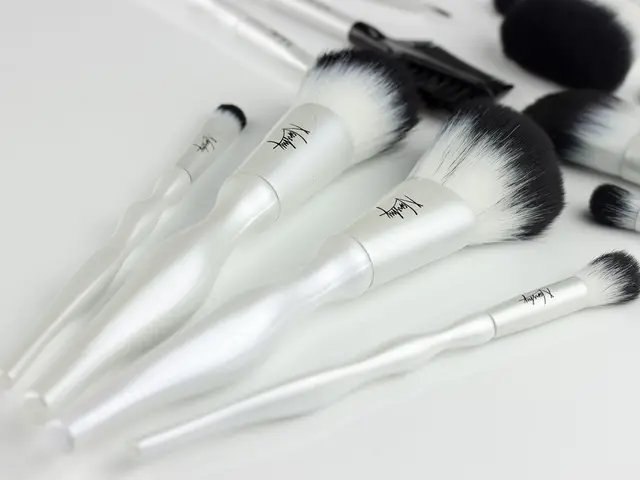Rapid, Severe Rosacea: Triggers, Signs, and Remedies
Ramping Up the Real Deal: Rosacea Fulminans
Rosacea Fulminans is a rare, severe skin condition, packing a punch with sudden redness, swollen nodules, and pimples on your central face – chin, cheeks, and nose. It's like an extreme version of acne, hitting hard and fast.
Known also as Pyoderma Faciale, this condition usually targets women of childbearing age, but the exact cause remains a mystery. But hey, let's dig deeper, right?
A recent review[1] suggests there might be links with other conditions, such as Inflammatory Bowel Disease and pregnancy, amongst others. Plus, if you've had any rosacea before, it might be more likely to haunt you again.
Wanna know common triggers? Let me break it down:
- Stress (over your to-do list, work, or family, you name it)
- Hormonal swings (yes, Mother Nature isn't always nice to your skin)
- Certain medications (check the fine print)
According to another review[2], your diet might play a role in triggering or worsening rosacea symptoms. Potential dietary triggers to watch out for include:
- Spicy dishes
- Alcohol (specifically red wine and beer)
- Tomatoes, chocolate, and citrus fruits, high in cinnamaldehyde
- Histamine-rich foods and beverages, such as aged cheese, processed meats, wine, and dairy products
Now, it's worth noting that these triggers don't specifically pertain to Rosacea Fulminans. Also,Keep in mind, dietary triggers vary from person to person, so a one-size-fits-all approach isn't recommended.
Pictures of Rosacea Fulminans show symptoms primarily affecting the forehead, nose, cheeks, and chin. These may include severe skin color changes, painful pustules, inflammation, flushing and blushing, plus burning and stinging sensations. Some individuals might experience eye-related symptoms, such as dry eyes, burning, itching, and light sensitivity. Systemic symptoms like fever and fatigue are rare, but it's always best to keep an eye out.
When it comes to treatment, corticosteroids and Isotretinoin (Accutane) are popular options in combating it. In some instances, your healthcare professional may prescribe antibiotics, topical corticosteroids, and even suggest stress management techniques, such as meditation, deep breathing exercises, exercise, or journaling.
If you're experiencing any symptoms beyond typical rosacea or acne, such as large, tender nodules, abscesses, significant facial discomfort, sudden onset of symptoms, persistent or worsening symptoms, eye irritation, or systemic symptoms like fever, it's best to speak with a dermatologist or healthcare professional. Early intervention can help reduce complications like scarring and infections, improve quality of life, and tackle emotional distress that can come with the condition.
[1] https://www.sciencedirect.com/science/article/pii/S2213319819313177[2] https://www.ncbi.nlm.nih.gov/pmc/articles/PMC7266397/
- The medical field is exploring potential links between Rosacea Fulminans and other conditions such as Inflammatory Bowel Disease and pregnancy, adding to the list of chronic diseases associated with dermatology.
- Rosacea Fulminans shares common triggers with regular rosacea, which can be either stress, hormonal swings, certain medications, spicy dishes, alcohol, tomatoes, chocolate, citrus fruits, histamine-rich foods, or foods high in cinnamaldehyde.
- Early intervention, which may involve corticosteroids, Isotretinoin (Accutane), antibiotics, topical corticosteroids, and stress management techniques, is crucial to reduce complications like scarring and infections, thereby improving the health and wellness of individuals dealing with Rosacea Fulminans.
- If you're suspecting you might have Rosacea Fulminans, characterized by severe skin color changes, painful pustules, inflammation, and eye-related symptoms, consult a dermatologist or healthcare professional immediately to receive adequate treatment and tackle potential emotional distress.








